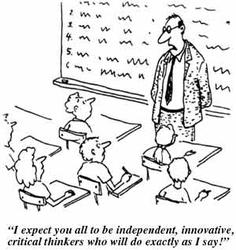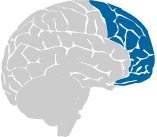UDL Principle II: Multiple Means of Expression
Provide options for how students express what they have learned.

Source: https://assistivetechnologytidbits.wikispaces.com/About+UDL
 Learners differ in the ways that they can navigate a learning environment and express what they know. For example, individuals with significant movement impairments (e.g., cerebral palsy), those who struggle with strategic and organizational abilities (executive function disorders), those who have language barriers, all approach learning tasks very differently. Some may be able to express themselves well in written text but not speech (National Center on Universal Design for Learning, 2012).
Learners differ in the ways that they can navigate a learning environment and express what they know. For example, individuals with significant movement impairments (e.g., cerebral palsy), those who struggle with strategic and organizational abilities (executive function disorders), those who have language barriers, all approach learning tasks very differently. Some may be able to express themselves well in written text but not speech (National Center on Universal Design for Learning, 2012).
It should also be recognized that action and expression require a great deal of strategy, practice, and organization - another area in which learners can differ. In reality, there is not one means of action and expression that will be optimal for all learners; providing options for action and expression can greatly improve learning in your class. To provide multiple and flexible means of expression is to provide students alternatives for demonstrating what they have learned.
Allowing students to choose can be an effective method for students to demonstrate their learning, however, there are times when the purpose of the assignment is to challenge the student to go beyond their comfort zone and try something new in order to expand their abilities. An option is to provide, for example, four different types of assignments in the semester and students are required to complete three. Another example is having a test or exam that is divided into sections where each section has different types of questions such as, multiple choice, short answer, case study, essay or calculations. Each section is weighted the same. Students must complete three of the five sections to complete the test.
Professor Kari Kumar provides more detail about
how she incorporates UDL in her health science course (2 minutes).
The following Assigment shows how we can give students choice while still meeting the Course Learning Outcomes.
Sample Assignment using UDL guideline Multiple Means of Expression
Strategic Network
 Strategic networks are required for executive functioning such as: selective attention, planning, organization, and self-monitoring. They guide our behaviours and in response to learning, are used to set goals, focus, and monitor progress. If there are problems, it is the strategic network that will evaluate the situation and develop a plan (Rose & Strangman, 2007). Digital media can provide opportun ties for multiple means of practice in order for a student to develop the strategic skills required to learn the concept. Links to different models or modes can assist a student's understanding of the concept. This enables the student to create better mental models of the concept, and therefore, be more strategic in further learning such as determining relevance or concentrating on more difficult aspects, etc.
Strategic networks are required for executive functioning such as: selective attention, planning, organization, and self-monitoring. They guide our behaviours and in response to learning, are used to set goals, focus, and monitor progress. If there are problems, it is the strategic network that will evaluate the situation and develop a plan (Rose & Strangman, 2007). Digital media can provide opportun ties for multiple means of practice in order for a student to develop the strategic skills required to learn the concept. Links to different models or modes can assist a student's understanding of the concept. This enables the student to create better mental models of the concept, and therefore, be more strategic in further learning such as determining relevance or concentrating on more difficult aspects, etc.
Communication technologies can be used to give immediate feedback such as the discussion board, email, Skype, online office hours. Technology has improved accessibility to the professor enabling quicker clarification of issues, connection to other students, and collaboration (Rose, et al, 2002).
Additional Resources:
Faculty Focus - Think Alouds shed light on how students grapple with content
Faculty Focus: A Role for Student Choice in Assignments?
References:
National Center on Universal Design for Learning. (2012). UDL Guidelines - Version 2.0. Available at: http://www.udlcenter.org/aboutudl/udlguidelines/principle2
Rose, D., Meyer, A., Strangman, N., and Rappolt, G. (2002). Teaching Every Student in the Digital Age. Alexandra, Virginia: Association for Supervision and Curriculum Development.
Rose, D. and Strangman, N. (2007). Universal Design for Learning: meeting the challenge of individual learning differences through a neurocognitive perspective. Universal Access in the Information Society, 5:381-391. DOI 10.1007/s10209-006-0062-8
